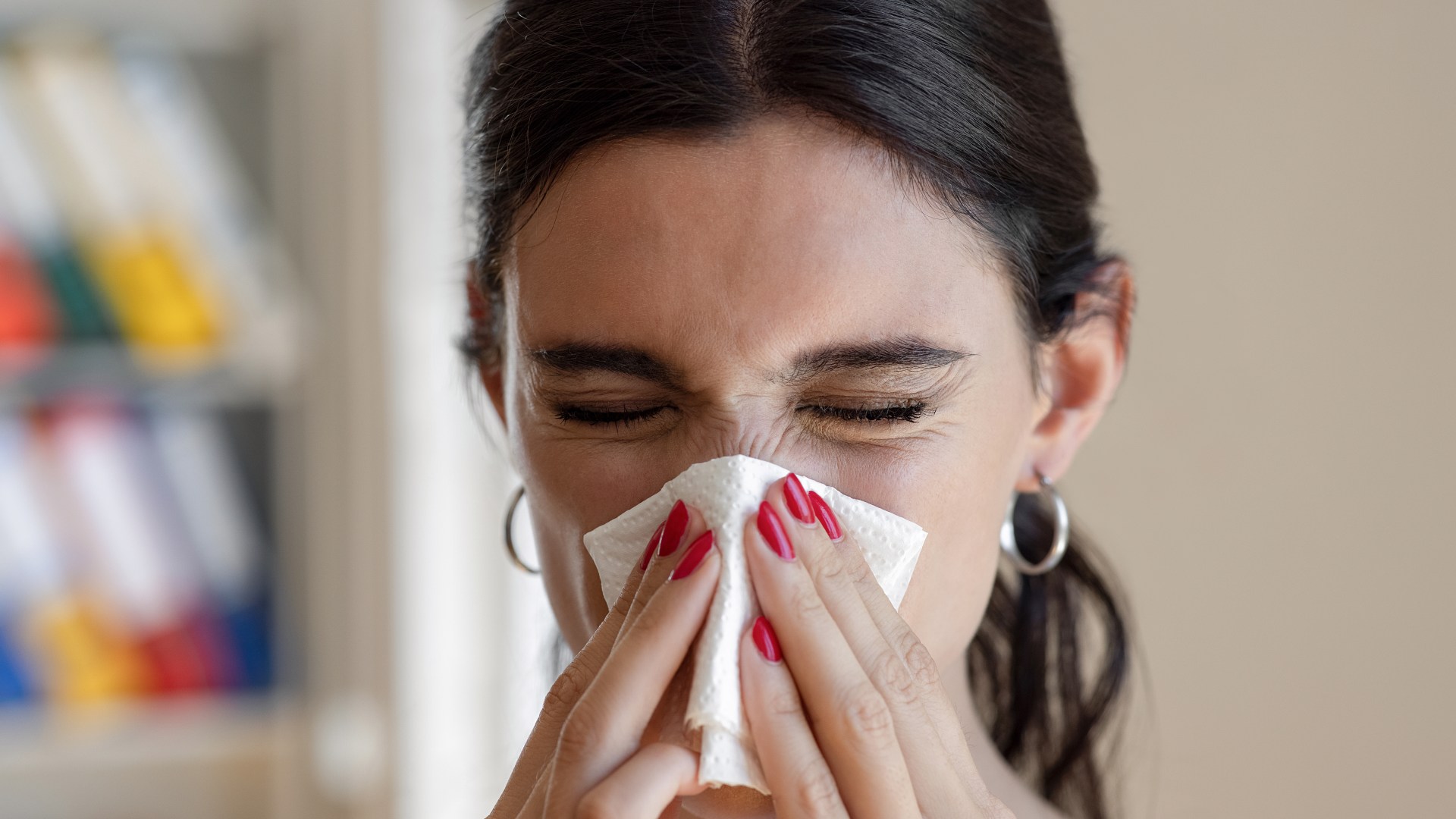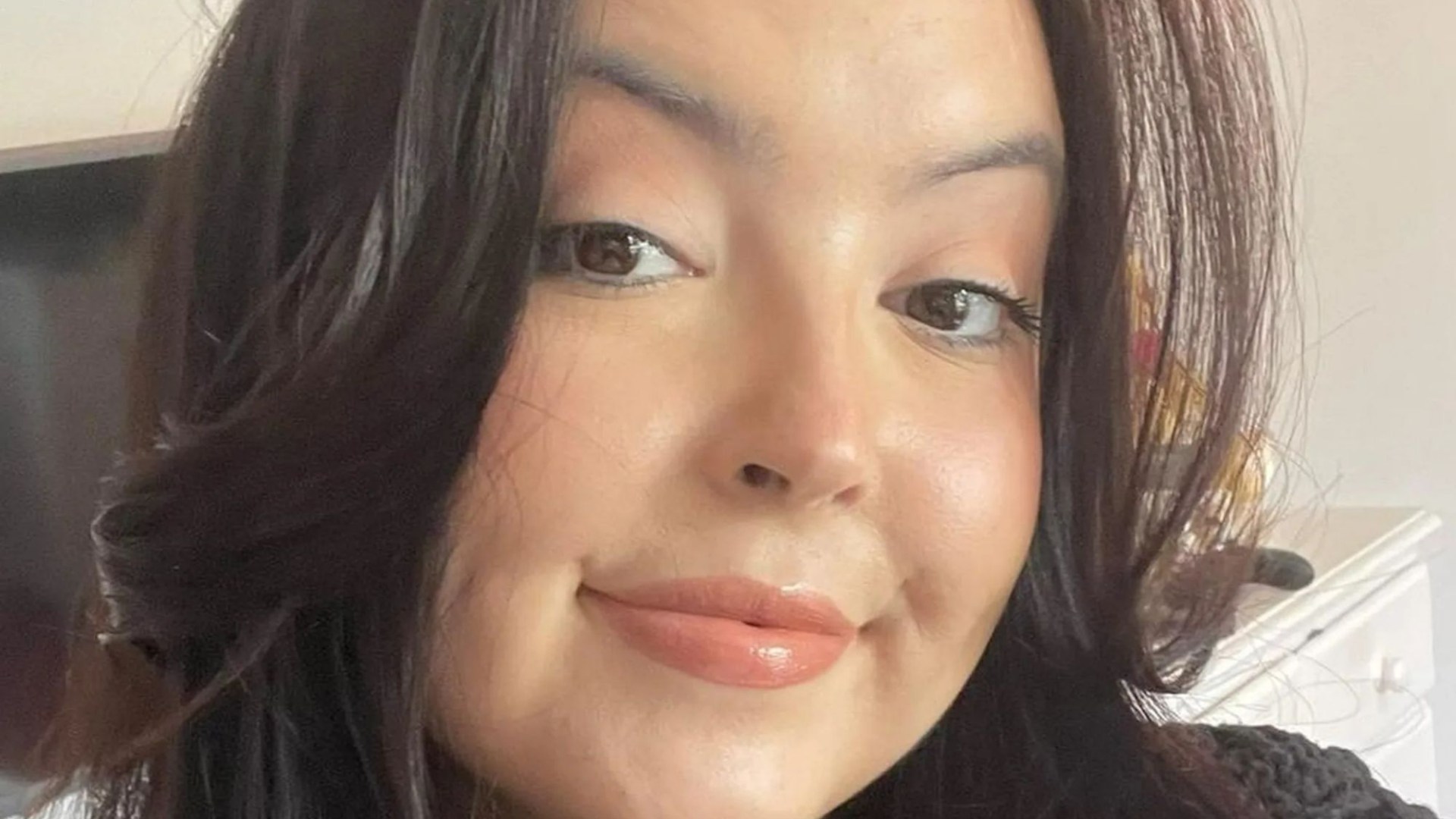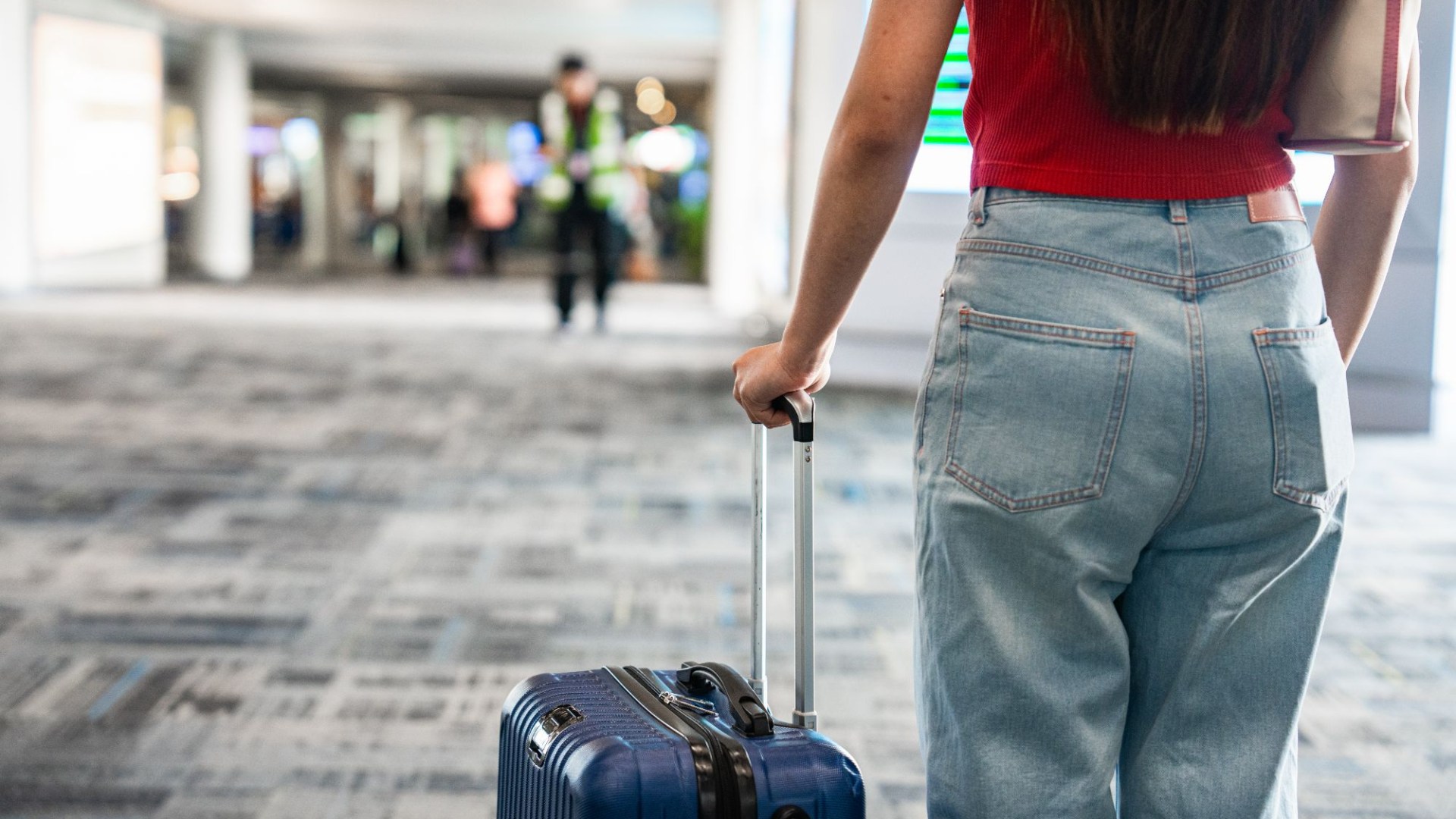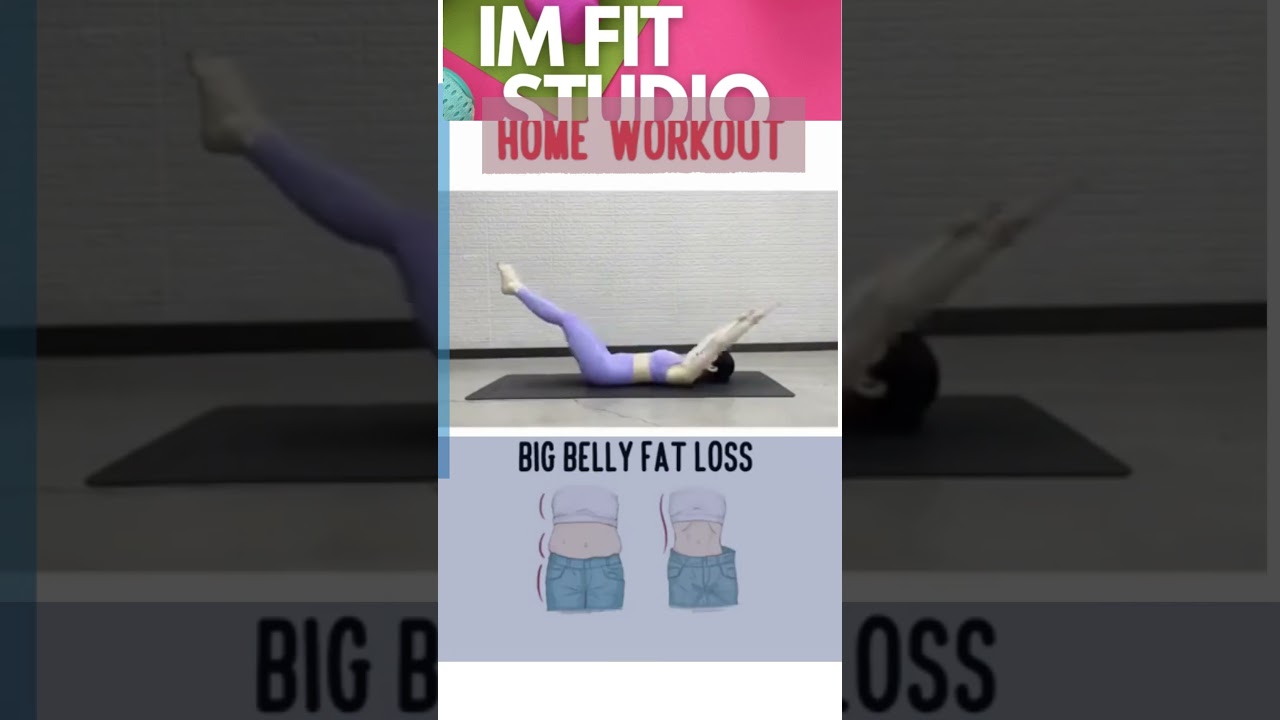Health & fitness
Exactly how many alcoholic drinks a week raises your risk of different cancers revealed

APOLOGIES if you’re reading this with a glass of something boozy in hand, but the truth hurts: drinking increases your risk of cancer.
Experts from Cancer Research UK (CRUK) and the US National Cancer Institute (NCI), all agree that alcohol contributes to at least seven different types of cancers, including breast, bowel and voice box.
Yet, a new report suggests that most people are unaware of the established risk.
Experts at the American Association for Cancer Research found more than half (51 per cent) of people in the US don’t know that alcohol increases your risk of cancer.
Elsewhere, like in the UK and Europe, other research has shown public awareness may be even lower.
Perhaps this isn’t too surprising given the growing debate within the scientific community over recent years about how much alcohol is truly ‘safe’ to consume.
Is a glass of red wine not good for our hearts? Is a drink or two not good for relaxing you and reducing harmful swelling and damage in the blood vessels?
Even if this may be true, a report published on the NCI’s website, suggests as little as one drink per day is enough to increase your risk of several cancers, challenging the idea that a glass of wine with dinner is ‘fine’.
Dr Therese Bevers, medical director of MD Anderson’s Cancer Prevention Center, said: “The important thing to remember is that every time you drink, you increase your cancer risk.
“As with cigarettes and processed meat, there is no safe amount of alcohol”.
In the UK, approximately 29.2 million adults reported having drunk alcohol, which is around 57 per cent of the adult population, according to the Office for National Statistics.
Each year, around 12,000 Brits are diagnosed with cancers linked to alcohol, leading to an estimated 4,200 deaths.
Similar high figures relating to booze can be seen around the world, including in the US.
How much alcohol can I drink?
Because drinking is so common, researchers at the NCI have begun to keep track of emerging trends linking alcohol to certain cancers.
They found that if you’re a woman who has seven drinks per week or a man who has 14 drinks per week – otherwise known as a moderate drinker – your risk of developing mouth and throat cancers is 1.8 times higher than those who don’t drink.
The threshold is higher for men as they usually process alcohol faster than women, so it affects them differently, Dr Therese said
The report defines one drink as either 350ml (12 ounces) of beer, a shot of a spirit or 145ml (five ounces) of wine.
For the same amount of boozing, your risk of developing cancer in the voice box is 1.4 times higher than people who don’t drink.
Men who drink 15 or more drinks per week and women who drink eight or more drinks per week – otherwise known as heavy drinkers – have a 2.6 higher risk of developing the disease.
The same groups have a five times greater risk of developing mouth and throat cancers.
Drinking a moderate amount of alcohol raises your risk for developing cancers of the oesophagus – the tube that connects the throat to the stomach – by 1.3 times higher than not touching booze.
Heavy drinking increases your risk of this cancer five times higher than if you weren’t to drink at all.
In the mouth and throat, alcohol can be an irritant, damaging and inflaming the delicate cells that line the area, according to CRUK.
This can also make the cells more susceptible to damage from carcinogens, like cigarette smoke.
How does alcohol cause cancer and what types?

There are many ways that alcohol can cause cancer. Some of the main ways are:
- It damages our cells: When we drink alcohol, our bodies turn it into a chemical, called acetaldehyde. Acetaldehyde can damage our cells and can also stop cells from repairing this damage.
- Changes to hormones: Alcohol can increase the levels of some hormones in our bodies such as oestrogen and insulin. Hormones are chemical messengers, and higher levels of oestrogen and insulin can make cells divide more often. This increases the chance that cancer will develop.
- Changes to cells in the mouth and throat: Alcohol can make it easier for cells in the mouth and throat to absorb harmful chemicals that cause damage.
Remember, it’s the alcohol itself that damages your body, even in small amounts. It doesn’t matter whether you drink beer, wine or spirits.
All types of alcohol can cause cancer.
There are plenty of tricks that people claim ‘cure’ hangovers.
But even if they work for your hangover, they don’t reverse the damage caused by drinking alcohol.
What types of cancer does alcohol cause?
Drinking alcohol causes 7 different types of cancer. This includes:
- Upper throat
- Mouth
- Voice box
- Oesophagus
- Breast
- Liver
- Bowel
Source: CRUK
Scientists haven’t found an increased risk of liver cancer in moderate drinkers.
But in heavy drinkers, the risk for liver cancer is two times higher than in teetotalers.
This is because drinking alcohol long-term can cause cirrhosis of the liver, which, in turn, increases the risk of liver cancer.
Moderate drinkers experience a 1.2 times higher risk for colorectal cancers than those who don’t drink.
Heavy drinkers, on the other hand, have a 1.5 times higher risk of cancers of the bowel and the rectum than those who don’t drink.
Experts believe this is because alcohol can damage the cells that line the inside of the bowel, which makes it more likely for cancer to develop.
Moving beyond the digestive tract, scientists have found that women who drink moderately have a 1.23 times higher risk of developing breast cancer than those who don’t drink at all.
Doctors have said that this could be because alcohol can increase the amount of female hormone oestrogen circulating in the body.
High levels of oestrogen have previously been linked to an increased risk of breast cancer.
How to cut back on drinking

If you’re concerned about your drinking, a good first step is to see a GP.
They’ll be able to give advice and support on how to manage your drinking habits and cut back safely.
This might involve counselling, medicines or detox services.
There are many charities and support groups you can join or speak to, as well as helplines:
Womens Workouts
Women`s Physique posing routine +163cm Michaela Schaar – Germany Loaded Cup 2016

Women`s Physique posing routine +163cm Michaela Schaar – Germany Loaded Cup 2016
source
Health & fitness
How to tackle a cold in 24 hours – from the best treatments to common myths to avoid

THERE is arguably nothing worse than feeling a cold coming on.
Those all too familiar symptoms, sore throats, runny noses and pressure in your face, strike children twice as many times a year as adults.
And with a new Covid variant driving up new cases, and flu poised to strike, it seems like everyone is coming down with something at the moment.
While it can be hard to tell all three bugs apart, a cold, on the whole, tends to be a little milder.
There’s no proven way to get rid of cold, however, several medicines and remedies can help ease the symptoms, TV pharmacist Thorrun Govind explains.
“The crux of getting yourself better involves lots of rest, sleep and water; this will give your immune system the best chance,” she tells The Sun.
She also stresses the importance of keeping yourself hydrated.
You don’t need to gulp down two litres of water – tea and coffee also work
“You can also try drinking some fruit juice or squash – the important thing here is to avoid dehydration,” Thorrun explains.
The main reason to pay close attention to your fluid intake when you’re sick is that you are probably neglecting your normal eating and drinking habits.
On top of this, you’re also losing water to congestion and a fever.
Treatments that work
If those pesky symptoms are getting the better of you, Thorrun says there are a few treatments you can try.
“Try gargling some salt and water to treat a sore throat,” the pharmacist suggests.
To do this, dissolve half a teaspoon of salt in a glass of warm water.
Gargle with the solution, then spit it out. Repeat as often as you would like.
According to Penn Medicine, salt water can help kill bacteria, ease pain, and loosen mucus, helping to relieve symptoms.
For those wanting to relieve their blocked noses, try some decongestant medicines.
“Nasal sprays work much quicker than tablets because the decongestant reaches your blocked nose almost instantly,” Thorrun explains.
In fact, health experts in the US claimed decongestants when used in oral medicines (rather than nasal sprays), don’t work at all.
“Make sure you don’t use these sprays for longer than five days,” she warns, “as using them for any longer can make your nose more blocked, even after the infection has cleared up”.
Recently, scientists have found that saline nasal drops can reliably shorten a child’s cold by two days, in addition to reducing the risk that they’ll pass the bug on to their parents or other family members.
The best way to ease aches and pains we often get with a cold is to pop some paracetamol and ibuprofen, the expert adds.
“You can take both these at the same time, but make sure you keep track of how much you take so you don’t take too much,” she explains.
Myths to avoid
“Some people take vitamin C, but there is very little evidence to suggest it helps with a cold,” ^Thorrun says.
Some studies suggest the vitamin could help clear up a cold faster, but the evidence is still inconclusive.
“Another popular product for cold and flu among patients is echinacea, but there isn’t much evidence to suggest it does anything,” she adds.
Echinacea is a plant that experts once thought stimulated the immune system to fight infection more effectively.
Recent studies have found that dietary supplement does little to reduce the time you feel ill.
Thorrun warned people asking for or using against using left-over antibiotics they might find in their house.
“You won’t need antibiotics if you have a cold because colds are viruses, and antibiotics are only effective against bacteria,” she says.
Prevention is better than cure
Like with all illnesses, when it comes to a cold, prevention is better than cure.
“To avoid getting a cold, wash your hands regularly, particularly before touching your nose or mouth and handling food,” Thorrun says.
And if you live with someone with a cold, don’t share items like a towel or cup with the ill person.
When to see a GP
You only need to see a healthcare professional if your cold symptoms persist for more than three weeks or if they worsen suddenly.
You should always seek help if you develop breathing difficulties, chest pain, or start coughing up bloodstained mucus.
Which cold and flu remedies actually work?

Sun Health reporter Isabel Shaw put nine well-known cold and flu remedies when she was struck with a lurgy.
Over the course of a week, she tried products targeted at all symptoms associated with cold and flu, as well as treatments that only aimed to get rid of specific issues.
These included:
- Hot honey and lemon
- Steam inhalation and Vicks Vaporub
- Echinacea
- Chicken soup
- A spicy curry
- Beechams All in One Oral Solution
- Strepsils
- Lemsip Max
- Sudafed Blocked Nose Spray
She took into account pain reduction, and how quickly and for how long they worked.
Read her full verdicts here.
Womens Workouts
Most important exercises for runners | Full Workout Routine to run faster and prevent injury

This workout is perfect for you if you want to strengthen your core and knees, prevent injury and run faster.
You might also like this workout ► https://youtu.be/9wxG7behgeo
🗓️ DOWNLOAD Free Monthly Workout Schedule ► https://the-art-of-health.de/en/freebies-en/
👟Shoes I’m wearing ► https://tidd.ly/3vXDqAU
Get 20% with Code ‘Marie20’ off your Vivobarefoot shoes 🦶
Details for this workout ▼
○ Muscles worked: Full Body (legs & core focus)
○ Time: 35 Min. (Warm-Up and Cool-Down included)
○ Equipment: Two Dumbbells (for reference, I used 2x 5kg)
⏱️ 55 sec on | 10 sec off | 1 round👇
Warm-Up
• Downward Dog Foot Pedal
• Lunge Side Reach to Knee Lift
• Single Leg Standing Weight Pass
⏱️ 30 sec on | 10 sec off | 2 rounds👇
Superset 1
• Single Leg Deadlift with Knee Lift
• Weighted Side Plank with Rotation
Superset 2
• Explosive Step Up
• Dead Bug
Superset 3
• Goblet Squat + Calf Raise
• Elevated Bent Knee Side Plank
Superset 4
• Skater Jumps
• Side Plank Knee to Elbow
⏱️ 30 sec on | 5 sec off | 1 round👇
Single Leg Drop Set
• Bulgarian two Dumbbells
• Bulgarian one Dumbell
• Bulgarian Bodyweight
⏱️ 45 sec on | 10 sec off | 2 rounds👇
Core Finisher
• Runners Crunch
• Mountain Climber
⏱️ 45 sec on | 10 sec off | 2 rounds👇
Cool-Down
• Deep Lunge Hip Circles
• Foot Stretch Knees to Floor
• Shin Stretch
○ Subscribe to my channel for weekly Workouts and Podcast Episodes ► https://youtube.com/@MarieSteffen?si=t3G2NFmDu8RBg0VP
Disclaimer
Before starting this workout, consult with your healthcare provider, especially if you have pre-existing health conditions. This workout is designed for individuals with a general level of fitness; adjust intensity based on your fitness level. Pay attention to your body’s response during the workout; stop immediately if you experience pain, dizziness, or discomfort and consult a healthcare professional. Participation is voluntary and at your own risk; the creator is not liable for any injuries resulting from the exercises. The information in this video is for general educational purposes and not a substitute for professional medical advice; seek guidance from your physician for any health concerns.
💪Try my Workout App for free: ► https://0de371-2.myshopify.com/
🍽️ My Nutrition App (The Art of Health):
○ iOS – Apple Store ► https://apps.apple.com/de/app/the-art-of-health/id1565967554?l=en
○ Android – Playstore ► https://play.google.com/store/apps/details?id=com.mariesteffen.taot&hl=en_US&gl=US
1:1 Coaching Waitlist ► https://bit.ly/3GCcfxj
🎙️ The Art of Health Podcast ▼
○ On YouTube: https://www.youtube.com/playlist?list=PLnG92tcrtk49IrY7wSvRN3fyzAXADJDGz
○ On Spotify: https://open.spotify.com/show/5Y173fTNhC7nQBtrhmluTR?si=9a376632ef4142fd
○ On Apple Podcast: https://podcasts.apple.com/us/podcast/the-art-of-health-podcast/id1705076378
My Website ► https://the-art-of-health.de
Business Inquiries ► marie@fyndafit.com
source
Health & fitness
Woman, 27, shares the first warning sign of killer cancer that she mistook for a ‘shaving nick’

A YOUNG woman has revealed worryingly harness sign she had a rare blood cancer.
Jessica Hamersley, from Essex, noticed a red throbbing splotch on her left shin that kept disappearing and reemerging for over a year.
The 27-year-old, who dismissed it as eczema or a shaving nick, assumed it was merely irritated by her perfumed moisturiser and would disappear on its own.
It was only after her fiancé urged her to get it checked out, fearing it may be related to her contraceptive pill, that she sought medical advice.
When a second pill failed to get rid of the rash she was referred for an X-ray in October 2023, which revealed a mass on her chest.
Subsequent biopsies in February found Jessica had Hodgkin lymphoma – a rare cancer that starts in the white blood cells.
A PET scan in March also showed the mass on her chest was more than seven inches in size and had been “crushing” her heart.
Recalling the ordeal, Jessica said: “I sometimes use perfumed moisturiser and sometimes with eczema that can cause my skin to have a little bit of a flare up.
“Honestly at the time I didn’t think anything serious of it.
“I thought maybe it was a flare-up on my leg or I caught myself when I was shaving. You never think of cancer.
“A rash on my leg literally saved my life.
” I don’t smoke, I only drink really rarely when I go out.
“So I was thinking, I’m perfectly healthy, why would I get cancer?
“I had no cough, when I saw the chest x-rays I thought oh my god that was sitting on my chest but I felt fine. It’s really strange.
“I was so healthy. I actually feel more unwell from the chemo than I did before. I felt completely healthy with all the tumours.
“I even remember when I went to the x-ray room I said to the radiologist, ‘this is really dramatic, I’m sorry for wasting your time’.
“Usually with Hodgkin lymphoma, you can get loads of other symptoms. I had nothing.”
Hodgkin lymphoma occurs when infection-fighting white blood cells called B-lymphocytes multiply in an abnormal way and collect in certain parts of the lymphatic system.
What are the signs of lymphoma?
LYMPHOMA is a term for cancer that starts in the lymph system – a network of vessels and glands that spans your body.
There are two main kinds of lymphoma – Hodgkin Lymphoma and Non-Hodgkin Lymphoma.
Lymphoma can cause many different symptoms, depending on which type of lymphoma it is and where it develops in the body.
The most typical signs are:
- Swollen lymph nodes, such as in the neck, armpit or groin area
- Night sweats
- Extreme tiredness
- Itching
- Unexplained weight loss
- Fever
- Excessive bleeding, such as nosebleeds, heavy periods and spots of blood under the skin
Other signs of lymphoma in a more localised area include:
- Swelling of the stomach, loss of appetite and other abdominal symptoms
- Coughing, shortness of breath, or chest pain
This can cause a painless swelling in a lymph node, usually in the neck, armpit or groin.
Other symptoms include a persistent cough, a fever, night sweats and weight loss.
Around 2,600 people in the UK are diagnosed each year, meaning it accounts for fewer than one per cent of cancers.
In the US, 8,800 cases are spotted annually.
According to Cancer Research UK, almost 85 per cent of those with cancer will survive for five years or more after diagnosis.
Jessica was diagnosed with stage 2A Hodgkin’s lymphoma, meaning the lymphoma was in two or more groups of lymph nodes but there were no typical symptoms.
She also claimed her consultant at the Princess Alexandra Hospital told her the rash on her leg was erythema nodosum, a condition that causes fat tissue to be inflamed.
This usually goes away by itself but can sometimes be a sign of something serious like an inflammatory bowel condition, such as Crohn’s disease, according to the NHS.
The skin usually heals on its own within three to eight weeks without leaving a scar.
But other symptoms, such as joint pain and swelling, can last for several weeks.
‘I thought they had the wrong scan’
Jessica said: “When I spoke to the consultant about it [the rash] he said it’s a really weird way of your body telling you there’s something wrong inside.
“I thought maybe it was triggered with stress. But they said it [the mass] was crushing my heart.
“It was all crazy. I just froze really. I was with my partner and I feel like I zoned out, I wasn’t really listening.
“The whole time they were doing tests they said the worst possibility is cancer so my brain never went there.
“I thought they had the wrong scan.”
She added: “I cried when I was told I was going to lose my hair. Now it’s growing back so it doesn’t phase me as much, I’m used to it.
“But you just kind of go into fight or flight mode and it was just survival. It was just “what’s next? What do we do?”‘
‘I looked horrible’
After beginning an aggressive course of chemotherapy in the Spring, in August she was thankfully declared cancer-free.
“It happened so quickly. But my consultant said that if you lose your hair quickly it’s a very good sign that the chemo is working,” Jessica said.
“I looked horrible being bald but that’s what I was clinging to. I was like “oh my god it must be working then”.’
To celebrate being cancer-free, she is now going on holiday to Disneyworld Orlando with her fiancé, William Webber.
She said: “That weight just lifted off of me and all of my family’s shoulders.
“[William] He’s just been amazing. He’s been my rock through it all.
“All through chemo all we ever spoke about was how much of a good time it would be if we went to Disney together.
“I’m going to go celebrate in the happiest place on earth.
“I’m still very out of breath and I feel like my joints are still very weak because I got arthritis from the chemotherapy in my hips and spine.
“I’m just so glad it was caught early and the treatment was less than it would have been. I’m very grateful to that GP.’
‘You’re never promised tomorrow’
Jessica, who was working in customer service before her diagnosis, is now recovering from her treatment and building her stamina back up before going back to work.
She will still need to have follow-up scans and blood tests every few months to check the cancer has not returned.
Now, she is urging anyone concerned by their unusual symptoms to seek medical assistance as soon as possible.
“Life is so short and you don’t realise that until something like this happens,” she added.
“You’re never promised tomorrow and that’s such a big quote that sits in my head now.
“Cancer completely changes your perspective on life. I used to get angry if someone cut me up when I was driving and now I’m just thinking let it go.
“I just let everything go now. It’s never that deep now, it’s never that important anymore.”
Health & fitness
Warning as ‘suitcase and airport malaria’ fuel spread of killer disease across Europe

MALARIA cases resulting from bites from infected mosquitoes that have been transported on planes are on the rise in Europe.
Cases of suitcase and airport malaria, also known as Odyssean malaria, have been reported among travellers returning from countries where the disease is established.
Of 6,131 cases that were reported in the EU/EEA in 2022, 99 per cent were travel related.
Odyssean malaria refers to cases resulting from the bite of an infected mosquito transported by aircraft, luggage, or parcel from an endemic area.
Malaria was eradicated in western Europe in the 1970s, but locally-acquired infections are still reported sporadically every year in the continent.
Infections include those which are transmitted by a local mosquito after it has bitten an infected returning traveller, induced cases related to other means of transmission such as mother-to-child transmission, and Odyssean malaria.
In a systemic review of studies in Europe from 1969 to January 2024, out of 145 cases described from nine countries, 105 were classified as airport malaria, 32 as luggage malaria, and eight as either type of malaria.
Most cases were reported in France, Belgium and Germany.
The people infected either half resided or worked near or at an international airport.
And cases have been found to be rising with one third of cases reported over the last five years – even when air traffic declined during the Covid pandemic.
If malaria isn’t treated quickly it can be deadly. It’s a leading cause of death in many developing countries.
For the cases in the review with a known outcome, 124 recovered and nine died.
People infected with malaria had a mean age of 37.9 years and were more likely o be male than female.
Patients that died were older on average, with a mean age of 57.2 years.
Similar trends were demonstrated in a retrospective analysis of surveillance and case investigation data in France on locally acquired malaria from 1995 to 2022.
Researchers found a total of 117 locally acquired malaria cases reported in France.
Locally acquired infections remained constant overall, with more Odyssean being reported since 2011.
Half of patients were born in a country in Africa, where malaria is common, and the other half were both in France.
Most the cases were reported in the region Île-de-France.
The researchers have now advised strict enforcement of disinsectization of aircrafts to tackle the risk of Odyssean malaria.
They also recommended doctors consider the possibility of locally-acquired malaria for patients with an unexplained fever early, even if there is no travel history.
And would like to see more structured surveillance of malaria cases in Europe and the implementation of preventative measures.
Malaria is usually found in tropical regions including large areas of Africa and Asia, Central and South America, and parts of the Middle East.
It’s important to check the malaria risk for the country you’re travelling to before you go.
Symptoms of malaria to watch out for
Symptoms can be hard to spot, but can include:
- a high temperature, sweats and chills
- headaches and feeling confused
- feeling very tired and sleepy (especially in children)
- feeling and being sick, tummy pain and diarrhoea
- Loss of appetite
- Muscle pains
- yellow skin or whites of the eyes
- a sore throat, cough and difficulty breathing
These symptoms usually appear between 7 and 18 days after you’ve been bitten by an infected mosquito.
Sometimes, symptoms may not occur until months after travel, and in rare occasions years.
If you’ve travelled to a country where malaria is found and have malaria symptoms, get an urgent GP appointment or call NHS 111.
Source: NHS
Womens Workouts
Get FIT in 2024 with #imfitstudio 's Top 5 HIIT Exercises! #shorts

IM fit studio #imfitstudio #workout #exercise #fitness
HOW to do _Full body workout
cardio to lose weight fast
workout
yoga
exercise
health 24/7
good health 24 by 7 fat burning workout weight loss workout
Here’s an amazing belly fat loss workout that will give you the most amazing results in 2 weeks!
This is a high-intensity workout #hiitworkout will burn the fat in your stomach using all the muscles connected to your core in order to produce the best results in 14 days!
Do this workout with IM fit studio #imfitstudio until you complete the 14 days. Do it for more than 14 days until you see the results you wish to see! Good luck and let’s begin the workout.❤️💪
also watch
upper body work out :
planks:
https://youtube.com/shorts/Gitt06c7mmQ
lower body work out:
flat belly workout:
squats :
foods good for health:
Disclaimer:
When joining me for this workout video, you need to take some precautions as your health and safety is the most important. To avoid any injury or harm, you need to check your health with your doctor before exercising. By performing any fitness exercises without supervision like with this video, you are performing them at your own risk. See a fitness professional to give you advice on your exercise form. im fit studio will not be responsible or liable for any injury or harm you sustain as a result of this video.
**If you want to be notified when I upload a new video, consider to subscribe to our channel and also comment to tell us your achievements to get fit with #imfitstudio . I upload new videos everyday from Sunday to Friday!
best regards…
source
-

 Science & Environment4 weeks ago
Science & Environment4 weeks agoHyperelastic gel is one of the stretchiest materials known to science
-

 Technology4 weeks ago
Technology4 weeks agoWould-be reality TV contestants ‘not looking real’
-

 Science & Environment4 weeks ago
Science & Environment4 weeks agoHow to unsnarl a tangle of threads, according to physics
-

 Science & Environment4 weeks ago
Science & Environment4 weeks ago‘Running of the bulls’ festival crowds move like charged particles
-

 Science & Environment4 weeks ago
Science & Environment4 weeks agoMaxwell’s demon charges quantum batteries inside of a quantum computer
-

 Science & Environment4 weeks ago
Science & Environment4 weeks agoLiquid crystals could improve quantum communication devices
-

 Technology3 weeks ago
Technology3 weeks agoIs sharing your smartphone PIN part of a healthy relationship?
-

 Womens Workouts3 weeks ago
Womens Workouts3 weeks ago3 Day Full Body Women’s Dumbbell Only Workout
-

 Science & Environment4 weeks ago
Science & Environment4 weeks agoQuantum ‘supersolid’ matter stirred using magnets
-

 Science & Environment3 weeks ago
Science & Environment3 weeks agoX-rays reveal half-billion-year-old insect ancestor
-

 Science & Environment4 weeks ago
Science & Environment4 weeks agoWhy this is a golden age for life to thrive across the universe
-

 Science & Environment4 weeks ago
Science & Environment4 weeks agoSunlight-trapping device can generate temperatures over 1000°C
-

 Science & Environment4 weeks ago
Science & Environment4 weeks agoNerve fibres in the brain could generate quantum entanglement
-

 Science & Environment4 weeks ago
Science & Environment4 weeks agoQuantum forces used to automatically assemble tiny device
-

 Science & Environment4 weeks ago
Science & Environment4 weeks agoITER: Is the world’s biggest fusion experiment dead after new delay to 2035?
-

 Science & Environment4 weeks ago
Science & Environment4 weeks agoHow to wrap your mind around the real multiverse
-

 Science & Environment4 weeks ago
Science & Environment4 weeks agoA slight curve helps rocks make the biggest splash
-
News4 weeks ago
the pick of new debut fiction
-

 Science & Environment4 weeks ago
Science & Environment4 weeks agoLaser helps turn an electron into a coil of mass and charge
-

 News3 weeks ago
News3 weeks agoOur millionaire neighbour blocks us from using public footpath & screams at us in street.. it’s like living in a WARZONE – WordupNews
-

 Science & Environment4 weeks ago
Science & Environment4 weeks agoTime travel sci-fi novel is a rip-roaringly good thought experiment
-

 Science & Environment4 weeks ago
Science & Environment4 weeks agoPhysicists are grappling with their own reproducibility crisis
-

 Science & Environment4 weeks ago
Science & Environment4 weeks agoNuclear fusion experiment overcomes two key operating hurdles
-

 News4 weeks ago
News4 weeks ago▶️ Hamas in the West Bank: Rising Support and Deadly Attacks You Might Not Know About
-

 News4 weeks ago
News4 weeks agoYou’re a Hypocrite, And So Am I
-
Business2 weeks ago
Eurosceptic Andrej Babiš eyes return to power in Czech Republic
-

 Sport4 weeks ago
Sport4 weeks agoJoshua vs Dubois: Chris Eubank Jr says ‘AJ’ could beat Tyson Fury and any other heavyweight in the world
-

 Science & Environment4 weeks ago
Science & Environment4 weeks agoA new kind of experiment at the Large Hadron Collider could unravel quantum reality
-

 News4 weeks ago
News4 weeks ago▶️ Media Bias: How They Spin Attack on Hezbollah and Ignore the Reality
-

 Science & Environment4 weeks ago
Science & Environment4 weeks agoCaroline Ellison aims to duck prison sentence for role in FTX collapse
-

 News4 weeks ago
News4 weeks agoNew investigation ordered into ‘doorstep murder’ of Alistair Wilson
-

 Technology3 weeks ago
Technology3 weeks agoWhy Machines Learn: A clever primer makes sense of what makes AI possible
-

 Technology2 weeks ago
Technology2 weeks agoQuantum computers may work better when they ignore causality
-
Business2 weeks ago
Should London’s tax exiles head for Spain, Italy . . . or Wales?
-

 Football2 weeks ago
Football2 weeks agoFootball Focus: Martin Keown on Liverpool’s Alisson Becker
-

 Sport2 weeks ago
Sport2 weeks agoWatch UFC star deliver ‘one of the most brutal knockouts ever’ that left opponent laid spark out on the canvas
-

 Science & Environment4 weeks ago
Science & Environment4 weeks agoRethinking space and time could let us do away with dark matter
-

 Science & Environment4 weeks ago
Science & Environment4 weeks agoA tale of two mysteries: ghostly neutrinos and the proton decay puzzle
-
News4 weeks ago
The Project Censored Newsletter – May 2024
-

 Technology2 weeks ago
Technology2 weeks ago‘From a toaster to a server’: UK startup promises 5x ‘speed up without changing a line of code’ as it plans to take on Nvidia, AMD in the generative AI battlefield
-

 MMA2 weeks ago
MMA2 weeks agoConor McGregor challenges ‘woeful’ Belal Muhammad, tells Ilia Topuria it’s ‘on sight’
-

 Technology2 weeks ago
Technology2 weeks agoMicrophone made of atom-thick graphene could be used in smartphones
-

 News4 weeks ago
News4 weeks agoIsrael strikes Lebanese targets as Hizbollah chief warns of ‘red lines’ crossed
-

 Health & fitness4 weeks ago
Health & fitness4 weeks agoThe secret to a six pack – and how to keep your washboard abs in 2022
-

 Science & Environment4 weeks ago
Science & Environment4 weeks agoFuture of fusion: How the UK’s JET reactor paved the way for ITER
-

 Technology4 weeks ago
Technology4 weeks agoThe ‘superfood’ taking over fields in northern India
-

 Science & Environment4 weeks ago
Science & Environment4 weeks agoUK spurns European invitation to join ITER nuclear fusion project
-

 CryptoCurrency4 weeks ago
CryptoCurrency4 weeks agoCardano founder to meet Argentina president Javier Milei
-

 News3 weeks ago
News3 weeks agoWhy Is Everyone Excited About These Smart Insoles?
-

 Technology3 weeks ago
Technology3 weeks agoGet ready for Meta Connect
-

 Technology2 weeks ago
Technology2 weeks agoUniversity examiners fail to spot ChatGPT answers in real-world test
-
Business2 weeks ago
Ukraine faces its darkest hour
-
Politics3 weeks ago
Robert Jenrick vows to cut aid to countries that do not take back refused asylum seekers | Robert Jenrick
-

 Science & Environment4 weeks ago
Science & Environment4 weeks agoPhysicists have worked out how to melt any material
-

 Sport4 weeks ago
Sport4 weeks agoUFC Edmonton fight card revealed, including Brandon Moreno vs. Amir Albazi headliner
-

 Science & Environment4 weeks ago
Science & Environment4 weeks agoWhy we need to invoke philosophy to judge bizarre concepts in science
-
Politics4 weeks ago
UK consumer confidence falls sharply amid fears of ‘painful’ budget | Economics
-

 TV3 weeks ago
TV3 weeks agoCNN TÜRK – 🔴 Canlı Yayın ᴴᴰ – Canlı TV izle
-

 Science & Environment3 weeks ago
Science & Environment3 weeks agoMeet the world's first female male model | 7.30
-

 Womens Workouts3 weeks ago
Womens Workouts3 weeks ago3 Day Full Body Toning Workout for Women
-

 Technology3 weeks ago
Technology3 weeks agoRobo-tuna reveals how foldable fins help the speedy fish manoeuvre
-

 Health & fitness2 weeks ago
Health & fitness2 weeks agoThe 7 lifestyle habits you can stop now for a slimmer face by next week
-

 CryptoCurrency4 weeks ago
CryptoCurrency4 weeks agoEthereum is a 'contrarian bet' into 2025, says Bitwise exec
-

 Science & Environment4 weeks ago
Science & Environment4 weeks agoBeing in two places at once could make a quantum battery charge faster
-

 News4 weeks ago
News4 weeks agoHow FedEx CEO Raj Subramaniam Is Adapting to a Post-Pandemic Economy
-

 CryptoCurrency4 weeks ago
CryptoCurrency4 weeks agoDecentraland X account hacked, phishing scam targets MANA airdrop
-

 CryptoCurrency4 weeks ago
CryptoCurrency4 weeks agoBitcoin miners steamrolled after electricity thefts, exchange ‘closure’ scam: Asia Express
-

 CryptoCurrency4 weeks ago
CryptoCurrency4 weeks agoDZ Bank partners with Boerse Stuttgart for crypto trading
-

 CryptoCurrency4 weeks ago
CryptoCurrency4 weeks agoLow users, sex predators kill Korean metaverses, 3AC sues Terra: Asia Express
-

 CryptoCurrency4 weeks ago
CryptoCurrency4 weeks agoBlockdaemon mulls 2026 IPO: Report
-
Business4 weeks ago
Thames Water seeks extension on debt terms to avoid renationalisation
-
Politics4 weeks ago
‘Appalling’ rows over Sue Gray must stop, senior ministers say | Sue Gray
-

 MMA3 weeks ago
MMA3 weeks agoRankings Show: Is Umar Nurmagomedov a lock to become UFC champion?
-

 Womens Workouts3 weeks ago
Womens Workouts3 weeks agoBest Exercises if You Want to Build a Great Physique
-

 Womens Workouts3 weeks ago
Womens Workouts3 weeks agoEverything a Beginner Needs to Know About Squatting
-

 News3 weeks ago
News3 weeks agoFour dead & 18 injured in horror mass shooting with victims ‘caught in crossfire’ as cops hunt multiple gunmen
-

 Servers computers3 weeks ago
Servers computers3 weeks agoWhat are the benefits of Blade servers compared to rack servers?
-

 Business2 weeks ago
Business2 weeks agoWhen to tip and when not to tip
-

 Entertainment1 week ago
Entertainment1 week agoChristopher Ciccone, artist and Madonna’s younger brother, dies at 63
-

 News4 weeks ago
News4 weeks agoChurch same-sex split affecting bishop appointments
-

 Politics4 weeks ago
Politics4 weeks agoTrump says he will meet with Indian Prime Minister Narendra Modi next week
-

 News4 weeks ago
News4 weeks agoBrian Tyree Henry on voicing young Megatron, his love for villain roles
-

 Health & fitness4 weeks ago
Health & fitness4 weeks agoThe maps that could hold the secret to curing cancer
-

 Science & Environment4 weeks ago
Science & Environment4 weeks agoTiny magnet could help measure gravity on the quantum scale
-

 CryptoCurrency4 weeks ago
CryptoCurrency4 weeks agoDorsey’s ‘marketplace of algorithms’ could fix social media… so why hasn’t it?
-

 CryptoCurrency4 weeks ago
CryptoCurrency4 weeks agoBitcoin bulls target $64K BTC price hurdle as US stocks eye new record
-

 News4 weeks ago
News4 weeks agoBrian Tyree Henry on voicing young Megatron, his love for villain roles
-

 CryptoCurrency4 weeks ago
CryptoCurrency4 weeks agoCoinbase’s cbBTC surges to third-largest wrapped BTC token in just one week
-

 Travel3 weeks ago
Travel3 weeks agoDelta signs codeshare agreement with SAS
-

 Technology2 weeks ago
Technology2 weeks agoThe best robot vacuum cleaners of 2024
-

 Science & Environment4 weeks ago
Science & Environment4 weeks agoHow one theory ties together everything we know about the universe
-
Business4 weeks ago
JPMorgan in talks to take over Apple credit card from Goldman Sachs
-

 Science & Environment4 weeks ago
Science & Environment4 weeks agoQuantum time travel: The experiment to ‘send a particle into the past’
-
Business4 weeks ago
How Labour donor’s largesse tarnished government’s squeaky clean image
-

 Science & Environment3 weeks ago
Science & Environment3 weeks agoCNN TÜRK – 🔴 Canlı Yayın ᴴᴰ – Canlı TV izle
-

 News3 weeks ago
News3 weeks agoShocking ‘kidnap’ sees man, 87, bundled into car, blindfolded & thrown onto dark road as two arrested
-

 Politics3 weeks ago
Politics3 weeks agoHope, finally? Keir Starmer’s first conference in power – podcast | News
-

 News3 weeks ago
News3 weeks agoUS Newspapers Diluting Democratic Discourse with Political Bias
-
Business2 weeks ago
DoJ accuses Donald Trump of ‘private criminal effort’ to overturn 2020 election
-

 Technology4 weeks ago
Technology4 weeks agoiPhone 15 Pro Max Camera Review: Depth and Reach


















You must be logged in to post a comment Login